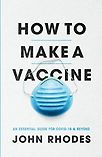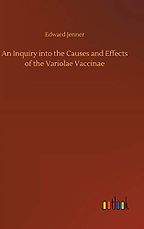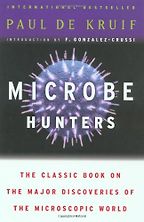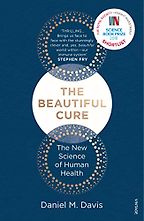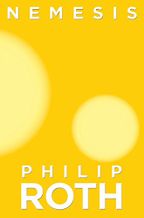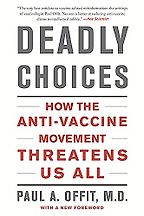Thank you for recommending us five of the best books on immunology. The journalist Ed Yong began an article last year with this joke:
An immunologist and a cardiologist are kidnapped. The kidnappers threaten to shoot one of them, but promise to spare whoever has made the greater contribution to humanity. The cardiologist says, “Well, I’ve identified drugs that have saved the lives of millions of people.” Impressed, the kidnappers turn to the immunologist. “What have you done?” they ask. The immunologist says, “The thing is, the immune system is very complicated …” And the cardiologist says, “Just shoot me now.”
The point, of course, is that the immune system is fearsomely complex. But at the beginning of your new book How To Make A Vaccine you offer a more inviting image, comparing it to Chinese martial arts, which are “elegant, intricate, precise, beautiful in their complexity, surprising in their depth, and as much about restraint, inhibition, and forbearance as about striking down an enemy.” Can those of us who are not specialists begin to understand the immune system through books like these?
I’m glad you liked my analogy! The immune system has evolved over a couple of billion years so several layers of complexity have been added as animals became more complex, but the layers work beautifully together. Imagine the arrival of a virus. The ancient ‘innate’ immune system of patrolling cells acts first to apprehend it and chemically judge how dangerous it is. These cells then sound the alarm and show the invader to the advanced immune system which can recognise and remember any intruder, building up an army of cells and antibodies to eliminate it. Next time the same virus attempts to invade, the army is there, ready to repel it. Vaccines work by imitating a dangerous infection, tricking the immune system into mounting a full immune attack on a harmless assault. This means that when the real virus arrives, the immune army is ready and waiting to prevent the infection.
But the immune system must also discriminate between the countless essential microorganisms in the gut and on the skin and mucous membranes which are essential to health, and those that are dangerous invaders. It must also refrain from attacking normal healthy tissue, despite the many changes they go through during development, pregnancy, ageing, and injury (without infection). This is why restraint, inhibition, and forbearance are central to immune function. Many complex mechanisms work together to prevent immune attack on normal tissues of the body, but sadly these sometimes go awry and the result is auto-immune diseases such as rheumatoid arthritis, multiple sclerosis and type I diabetes.
Tell us about your first immunology book recommendation, An Inquiry into the Causes and Effects of the Variolae Vaccinae by Edward Jenner.
I’ve always loved reading original sources, or at least dipping into them. Their warmth and accessibility is often surprising. Try reading the first page of Darwin’s Origin of Species, for example: ‘My work is now nearly finished; but as my health is far from strong, I have been urged to publish this Abstract.’ Jenner’s book on cowpox vaccination to prevent smallpox, which he self-published in 1798, is no less engaging. ‘The Wolf, disarmed of his ferocity, is now pillowed in the lady’s lap. The cat, the little Tyger of our island whose natural home is the forest, is equally domesticated and caressed.’ The point he is making relates to how animal viruses pass readily to humans, especially cowpox, of course. Jenner’s book was revolutionary and caused an uproar among its readers, especially members of the establishment. The same, of course, was true for Darwin’s great work some sixty years later. Jenner’s choice to self-publish was a brave one, but he did not feel confident that the learned scholars of the Royal Society would agree to publish his controversial findings.
The book is organised around 23 case histories that together support his historic insight into the protective power of cowpox against the most feared disease in human history, smallpox. His study also demonstrates that the protective vaccine can be transferred from the arm of one child to another in an extended series of vaccinations. Much of the writing is preoccupied with Jenner’s mistaken belief in an infection of horses as the origin of cowpox. But the important message remains loud and clear. Like many of the greatest stories, the essential cast of characters is small: Sarah Nelmes, the milkmaid who scratched her hand on a thorn and let the cowpox in; James Phipps, the gardener’s boy; Hannah Excell, age eleven; Mary Pead, age five; Mary James, age six; Robert Jenner, age eleven months; and the other members of the small band of children Jenner immunised to protect them against smallpox.
In How To Make A Vaccine, you note that the first well-documented trial of deliberate immunisation to prevent smallpox—and, indeed, any infectious disease—took place in 1721, considerably before Jenner’s time. Yet smallpox remained a global scourge, killing as many as half a billion people in the twentieth century before it was finally eradicated. What can we learn from this terrible history?
This question provides a timely balance for our enthusiastic response to COVID-19 vaccines. Edward Jenner’s vaccine was highly effective but it still took more than a century and a half to end smallpox. The spread of vaccination across the globe is often cast as a glorious enterprise of vaccine voyages and dedicated pioneers paying out the chains of vaccination arm to arm, casting a net of vaccination across the globe. But to defeat smallpox, this global net had to be turned into something much more like a blanket. The problems faced by the smallpox eradication campaign were as diverse as the geography of the earth and the teeming humanity of its nations. In 1958 the World Health Assembly approved a resolution to eradicate smallpox and this resolution was intensified in 1966.
Get the weekly Five Books newsletter
In the first half of the twentieth century, Europe and North America experienced intermittent outbreaks of smallpox, first through endemic disease and later because of imported cases, especially as the Second World War was ending. The last epidemic in the United States occurred in 1949 in Elsa, Texas, and saw nine infections and one death. Intensive vaccination quickly put an end to the outbreak. By the middle of the twentieth century, Europe and North America were free of smallpox. South America followed in 1971 and global eradication efforts became focussed on Asia and Africa.
The vaccine was still essentially Jennerian: calf lymph (or sheep or water buffalo) taken from pustules on the animals’ skin, with added stabilisers. But the campaign in tropical regions was now using freeze-dried vaccine—a huge step forward. Also instrumental in success was a simple forked applicator and later an automatic ‘jet’ injector delivering vaccine using high-pressure air. No needles were required for thousands of inoculations. But the final weapon essential to success was the ingenious use of ring vaccination or containment rather than mass vaccination. This focussed strategy was in large part due to the vision of William Foege, celebrated American vaccinator. Ali Maow Maalin of Somalia suffered the last natural case of smallpox in 1977 and went on to become a tireless vaccinator against polio. He was in the midst of this campaign when he contracted malaria and died in 2013.
The second of our immunology books is Microbe Hunters by Paul de Kruif. De Kruif seems to have been a colourful character. He fought in the Pancho Villa Expedition, a US intervention in the Mexican revolution, and was later an advisor to the novelist Sinclair Lewis. What is the enduring merit of this book, published in 1926, and how does it help the reader understand the immune system?
Yes, Paul de Kruif was larger than life in many ways, and this is expressed in his writing. His fruitful relationship with Sinclair Lewis, was a springboard for his later success. When Microbe Hunters first appeared in 1926, The Journal of the American Medical Association reviewed it favourably but with some criticism. ‘Unfortunately, doubtlessly to present the material in a vivid and dramatic manner, the style has taken on an exaggerated quality, which is annoying. Devilish, infernal and hellish are the adjectives most frequently used … These give the book somewhat the quality of the best seller in fiction.’ This critique proved dramatically prophetic: Microbe Hunters has never been out of print and is perhaps the most successful medical science book ever written. Among its fans was the young Albert Sabin, well on the way to becoming a dentist until Microbe Hunters changed his life. Sabin went on to produce a polio vaccine which today is very close to ridding the world of polio.
The book begins with Antonie van Leeuwenhoek, the pioneer microscopist who first described microorganisms, and the best way to grasp the flavour of de Kruif’s writing is to sample it. Here, van Leeuwenhoek’s daughter watches as he makes his great discovery: ‘What can that dear silly father be up to? He squints through his lens. He mutters guttural words under his breath … Then suddenly the excited voice of Leeuwenhoek! “Come here! Hurry! There are little animals in this rainwater… They swim! They play around! They are a thousand times smaller than any creatures we can see with our eyes alone… Look! See what I have discovered!”
Five Books interviews are expensive to produce. If you're enjoying this interview, please support us by donating a small amount.
In a similar vein, the work of thirteen other giants in the field of microbiology unfolds, as imagined by de Kruif. The scientific facts are correct, (de Kruif was a successful scientist) but the lives and passions of the great pioneers are dramatised in this book, magnified in the telling. The foundations of what would become the science of immunology are revealed in his accounts of Louis Pasteur, Lazzaro Spallanzani and Robert Koch. The book next focuses on discoverers of crucial mechanisms in the immune system and in disease transmission, as well as early treatments and cures. By this time in the early twentieth century, hygiene theory was widely accepted and germ theory well established, so the modern biomedical setting becomes more recognizable. The discovery of antibodies is told through the eyes of Emil von Behring balanced by the story of Élie Metchnikoff, the father of cellular immunology. The final microbe hunter de Kruif brings to life is Paul Ehrlich, whose “magic bullet” against syphilis was the first example of successful chemotherapy. At least one hero took exception to his portrait. Ronald Ross, who discovered malaria transmission by mosquitoes, called the book libellous and strenuously objected to the depiction of his relationship with Battista Grassi, his rival. But that didn’t stop de Kruif’s book from going down in history.
Tell us about The Beautiful Cure: Harnessing Your Body’s Natural Defences by Daniel M. Davis
Immunology is notoriously hard for non-specialists to understand, as the joke you mentioned at the beginning of this interview reminds us. Fortunately, despite being in the midst of a glittering career in immunology, Daniel Davis has found the time to introduce us to this world with this book. The text unfolds like a thriller, admitting us into the minds of the protagonists as they strive to push the boundaries of understanding forward. The author allows the tension to build, withholding the answers, so that we share the puzzlement, uncertainty and suppressed excitement of the search until the moment of discovery. It was exciting for me; and I already knew the answers!
The Beautiful Cure explains the importance of the relationship between the ancient innate immune system and the adaptive immune system which evolved later, conferring the power of immune memory—the basis for all successful vaccination. Although it all makes sense in the end and combines into a beautiful whole, the truth was very far from obvious until late in the twentieth century, and we share the uncertainties, the frustrations, and the battles to succeed. The bitter rivalries and resentments among eminent players is part of his compelling picture. There are no guarantees of glory—certain key figures in the history of immunology die without seeing their discoveries win through. In one tragic moment a dedicated scientist dies just days before his work is recognised with a Nobel Prize.
“The author allows the tension to build, so that we share the puzzlement, uncertainty and suppressed excitement of the search until the moment of discovery”
Davis describes major discoveries in the therapeutic power of custom-built antibodies which are transforming the development of new drugs in the 21st century. He explores biochemical connections between the mind and the body’s response to disease. And then he leads us through the fascinating field of restraint, inhibition, and forbearance in the immune system, a crucial web of mechanisms that was discovered, discarded, then rediscovered after a revolution in the tools we use to reveal and define immune phenomena. After this epic scientific journey, Davis rounds off the book with an account of how, for more than half a century, immunologists have been striving to harness the power of the immune system against cancer. What better place to read about the dawning of success than in the final pages of this lucid, thrilling tale.
Could you say a little more about how the potential for harnessing the immune system against cancer? It doesn’t escape notice that BioNTech, who have developed one of the leading Covid vaccines in partnership with Pfizer, have had cancer in view.
This is a very promising new area. The German company BioNTech was founded in 2008 specifically to develop immune-based cancer treatments. Cancer cells often have abnormal surface molecules not found on healthy cells, but for various reasons the immune system doesn’t attack them. The BioNTech idea was to create vaccines containing these molecules, teaching the immune system to attack cells with abnormal markers. In this way, immunotherapeutic treatments for melanoma and prostate cancer were developed. The cancer markers are encoded in messenger RNA (mRNA) to ensure the body makes a strong immune response, as if dealing with invading germs.
When COVID-19 appeared, early in 2020, BioNTech quickly adapted their mRNA technology to make the spike protein of coronavirus, exploiting their existing vaccine production system in what might be seen as the most successful small business decision of the 21st century!
This strategy is complementary to the promising breakthroughs in cancer immunotherapy described in the final chapter of The Beautiful Cure. Earlier in his book, Davis details the ways in which the immune system shows restraint, inhibition, and forbearance to protect normal cells and processes in the body. In a chapter titled ‘Future Medicines,’ he explains how these restraints can be switched off in a highly selective manner in patients with tumours, unleashing the power of the immune system against cancers such as melanoma. The secret is to disable or ‘block’ key off-switches on the surface of immune cells. The medicines which do this are known as checkpoint inhibitor drugs and they seem to work well in a proportion of patients. In the future there may be scope for combining mRNA therapeutic cancer vaccines with checkpoint inhibitor medicines to maximise the effectiveness of anti-tumour immunity.
Your next immunology book choice is Nemesis by Philip Roth. This book had somehow slipped under my radar and I’m grateful to you for highlighting it. Tell us what you like about it.
Philip Roth set what would be his last novel in the Newark, New Jersey neighbourhood where he was born and raised. Before the 2020 pandemic, the most famous race for a vaccine took place in mid-century America, entirely funded by voluntary donations from the American people—the race for a polio vaccine. Nemesis describes a fictitious outbreak of polio in 1944, eleven years before the vaccine. For me the story has great resonance with the events unfolding in 2020. The fear of polio, initially untreatable like COVID-19, was very great. Though facts and figures can convey the nature of a dreadful pandemic or a horrifying epidemic targeting children, the emotional reality is best portrayed in works of fiction. News media have done their best to make the experience of COVID-19, in intensive care units for example, real for those not involved; but can we truly enter the hearts and minds of those caught up in the contagion?
“The story has great resonance with the events unfolding in 2020. Mask wearing becomes contentious. Personal hygiene becomes obsessive”
Roth succeeds entirely with his protagonist Bucky Cantor, a young sports-teacher whose identity and self-esteem are wholly invested in his own physical prowess and his intense concern for the children in his care. Polio, the mysterious crippler and killer, threatens both. If only a vaccine could be found! Suspicions about the source of infection haunt relationships between communities. Mask wearing becomes contentious. Personal hygiene becomes obsessive. Roth intensifies the tension by inflating the frequency of fatalities. And then Bucky escapes to a kind of paradise—a summer camp in the mountains where his sweetheart is waiting and the beauty of both the natural world and his own prospects are revealed to him. But he is doomed to suffer permanent paralysis and there is no escape or remedy for the disease. In a final demonstration of his power as a writer, Roth ends the story with an indelible image of his young hero throwing the javelin at the pinnacle of his prowess.
When the polio vaccine arrived, no wonder it seemed like a miracle. A single vaccine to defeat the dread disease.
COVID-19 vaccination also arrived miraculously, first one then two, three, four, five, with half a dozen still to come, and a second generation to follow. It is fitting testament to the science of immunology and the new technologies that make vaccines possible.
Not everyone agrees, it seems. Your final book recommendation on the subject of immunology is Paul Offit’s Deadly Choices: How the Anti-Vaccine Movement Threatens Us All, was published ten years ago. What does the book say—and what, if anything, has changed?
Paul Offit is considered by many to be the leading authority on infectious disease in children in the United States, and he wrote this important and illuminating book in response to the growing problem of vaccine hesitancy in the late twentieth and early twenty-first century. Two major events were responsible for fuelling what would turn out to be groundless fears about the safety of vaccines. But once the damage had been done, it proved very difficult to restore confidence with large-scale consensus science. In 1974 a research paper in the respected British Medical Journal described 36 children with epilepsy and linked their condition with vaccination against whooping cough (pertussis). This sowed the seeds of uncertainty. In Britain, vaccine uptake fell to 31 per cent, while in Japan, little more than 10 per cent of children were vaccinated.
Another notorious publication, in 1998, did even greater harm, when British scientists suggested the MMR (measles, mumps, rubella) vaccine might be associated with autism. The paper was later discredited. Offit meticulously traces the events surrounding these setbacks, how they breathed new life into the anti-vaccination movement, and how this resulted in hundreds of preventable cases of infectious disease in the twenty-first century. He also highlights the lamentable failure to reap the benefits of new vaccines such as the HPV vaccine introduced in 2006. Almost 50 per cent of children go unprotected. Full uptake of this vaccine would probably prevent around twenty-six thousand cases of cancer each year in the United States.
“In Britain, vaccine uptake fell to 31 per cent, while in Japan, little more than 10 per cent of children were vaccinated”
But Offit doesn’t stop there. As well as documenting the large scale studies, conducted over decades, which firmly demonstrate the absence of a link between vaccines and developmental disorders, he details, in the case of convulsive seizures and arrested development, the true cause of the problem—a rare genetic disorder discovered in 2006. Offit is much admired for his wisdom and his willingness to engage with and reassure those with doubts. While some authorities on vaccine hesitancy analyse the sociological reasons behind vaccine refusal, Offit is the principal champion of objectivity, clinical investigation and the paramount importance of scientific understanding.
Since Offit’s authoritative publication in 2010, updated in 2015, the character of the anti-vaccination movement has shifted and changed. During the 2020 pandemic, conspiracy theories relating to coronavirus, the contents of COVID-19 vaccines, and the motivation behind vaccination policy gained ground, and these tapped into beliefs held by both right-wing libertarian extremists and left-wing proponents of wellness philosophy. During the turbulent events surrounding the U.S. presidential campaign, radical anti-vaccinationists sometimes found common-cause with militant protest groups. Nevertheless, the unparalleled success of the international collaborative endeavour to deliver safe and effective vaccines against COVID-19 has strengthened the majority view that vaccination is a powerful global weapon and a force for good.
What are the frontiers of immunology today?
One of the unsolved problems in immunology is highlighted by the pandemic. The coronavirus is not a serious infection for most people. In the majority, the immune system readily prevails. But a large and ever increasing group is highly vulnerable—the elderly. Before the twentieth century, life expectancy was limited but today most of us survive much longer. Understanding immunosenescence – how and why the immune system declines with age – is a major challenge for modern immunology.
Another major frontier relates to the young. The increased incidence and severity of allergic diseases such as asthma has yet to be explained and new therapies have been slow to emerge. Overly aggressive immune responses may be related to modern hygiene and the control of infections. Understanding this area will be important for progress in the future. The opposite problem—immunodeficiency disorders in the young—also remains a challenge.
As we saw in The Beautiful Cure, immune therapies for cancer have proved elusive until recently. Understanding how the immune system normally exercises restraint through regulatory cells has opened the way for new therapies. Blocking the checkpoints that restrain the immune responses has enormous potential in persuading immune cells to attack tumours. A complementary approach employs tailor-made treatments for cancer. By identifying immune targets on tumours, it’s possible to design individual anti-cancer vaccines. This is precisely what BioNTech scientists were doing before COVID-19 came along – producing customised mRNA vaccines for individuals with melanoma and prostate cancer. They were also combining these vaccines with checkpoint inhibitor therapies. These strategies have great potential for the future.
Get the weekly Five Books newsletter
Despite the stunning success of COVID-19 vaccines, we still lack highly effective vaccines against many developing-world diseases. These include TB, malaria, HIV and diarrheal diseases—the biggest killer of small children around the globe. Combination diarrheal vaccines, designed to complement hygiene measures, are in the early stages of development.
Understanding the causes of autoimmune diseases and the rational development of more effective treatments is another important frontier. Monoclonal antibodies for clinical use, designed to target immune regulatory molecules, have revolutionised the treatment of diseases such as rheumatoid arthritis, but there is still a long way to go. Such purpose-built antibodies have recently been joined by monoclonal T-cell receptors—engineered receptors removed from cells and used as therapeutic drugs. Immunology has traditionally depended on fundamental, curiosity-driven research to reveal secrets and enable the delivery of new therapies. But, as you can see from these answers, twenty-first century research is very much focussed on the manifold problems of disease.
Five Books aims to keep its book recommendations and interviews up to date. If you are the interviewee and would like to update your choice of books (or even just what you say about them) please email us at [email protected]

